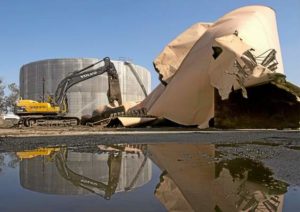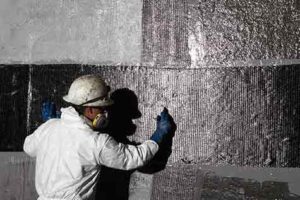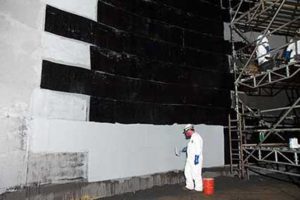â€

â€

Revitalize Your Infrastructure: Avoid Costly Wastewater Tank Replacement
Replacing wastewater tanks can be a costly and time-consuming process, involving extensive demolition, installation of new structures, and significant downtime. A recent report from the Whittier Daily News highlights Ridgeline Energy Services in Santa Fe Springs, CA, as they begin demolishing 19 tanks at their wastewater treatment facility. Located on the former Powerline Oil Co. refinery site, the plant has faced multiple odor issues due to wastewater mixing with residual sludge. Some tanks had leaks, allowing the mixture of substances and the release of hydrogen sulfide gas through roof openings, affecting air quality but not posing a toxic risk. Each tank weighs 28 tons and holds 16,800 gallons of wastewater. The metal from these tanks will be recycled, and the solution for the odor problem involved removing and destroying the tanks rather than repairing them.
A Global Challenge
Ridgeline’s situation is just one example of a widespread issue. Over time, steel tanks can corrode and develop leaks. While temporary fixes like steel plates may stop leaks initially, they often corrode over time. A more sustainable alternative is using Carbon Fiber Reinforced Polymer (CFRP) solutions, such as HJ3’s CarbonSeal system. Replacing an entire tank can cost millions in materials and lead to extended downtime. Additionally, it has a heavy environmental footprint—producing one ton of steel requires about 60,000 gallons of water. Replacing Ridgeline’s 19 tanks would have used around 32 million gallons of water, making repair a much more eco-friendly option.
A Success Story: NRG Energy
HJ3’s CarbonSeal system offers a cost-effective and environmentally friendly solution. One notable success story involves NRG Energy, a major power generation and retail electricity company. At one of its subsidiaries, a 2-million-gallon wastewater tank was leaking, and previous attempts to fix it with steel plates only made things worse, creating thousands of additional holes in the walls and floor.
The initial repair plan included reinforcing the tank walls, floors, and support columns. As the surfaces were prepared and hydro-blasted, 4,300 more holes were discovered, requiring further reinforcement. Steel plates were used to cover these holes, and then HJ3’s CarbonSeal carbon fiber system was applied. Surfaces were sandblasted, cleaned, inspected, and primed to prevent flash rusting. After applying HJ3’s primer and high modulus paste, the carbon fiber reinforcement was carefully installed across the tank’s walls, floor, and support beams, followed by a chemical-resistant topcoat to ensure long-term protection.
A Sustainable Solution
By choosing to repair instead of replace, NRG’s tank will last another 30 years. This approach saved the company significant costs and reduced environmental impact. Using HJ3’s CarbonSeal system led to a 90% reduction in energy consumption, 96% fewer CO2 emissions, and a conservation of 60 million gallons of water. Compared to replacement, NRG saved over $3 million, or 75%. Whether you’re dealing with a leaking wastewater tank or looking for sustainable repair options, consider HJ3’s CarbonSeal system. Contact our project managers today to learn how we can help extend the life of your infrastructure while protecting the environment.
â€

â€

â€
Palletizer and Wrapping Machine
Tin Can Stacker,Can Packing Machine,Can Palletizer Machine,Palletizer And Wrapping Machine
Zhoushan Golden Wing Machinery Co., Ltd. , https://www.goldenwingmachines.com